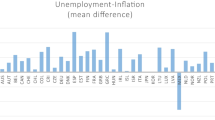Abstract
Housing transactions are executed and recorded daily, but are routinely pooled into longer time periods for the measurement and analysis of housing price trends. We utilize an unusually rich data set, covering essentially all arm's length housing sales in Sweden for a dozen years, in an attempt to understand the effect of temporal aggregation upon estimates of housing prices and their volatilities. This rich data set also provides a unique opportunity to compare the results using the conventional weighted repeat sales model (WRS) to those based on a research strategy which incorporates all available information on house sales. The results indicate the clear importance of temporal disaggregation in the estimation of housing prices and volatilities—regardless of the model employed.
The appropriately disaggregated model is then used as a benchmark to compare estimates of the course of housing prices produced by the two models during the twelve year period 1981–1993. These results indicate that much of the difference between estimates of price movements can be attributed to the data limitations which are inherent in the repeat sales approach. The results, thus, suggest caution in the interpretation of government-produced price indices or those produced by private firms based on the repeated sales model.
Similar content being viewed by others
References
Bailey, Marin J., Richard Muth, and Hugh O. Nourse. (1963). "A Regression Method for Real Estate Price Index Construction," Journal of the American Statistical Association 4, 933-942.
Case, Karl E., and Robert J. Shiller. (1987). "Prices of Single-Family Homes Since 1970: New Indexes from Four Cities," New England Economic Review, 45-56.
Case, Karl E., and Robert J. Shiller. (1989). "The Efficiency of the Market for Single Family Houses," American Economic Review 79, 125-137.
Calhoun, Charles A., Peter Chinloy, and Isaac Megbolugbe. (1995). "Temporal Aggregation and House Price Index Construction," Journal of Housing Research 6(3), 419-438.
Englund, Peter, John M. Quigley, and Christian L. Redfearn. (1998). "Improved Price Indexes for Real Estate: Measuring the Course of Swedish Housing Prices," Journal of Urban Economics, 44, 171-196.
Englund, Peter, John M. Quigley, and Christian L. Redfearn. (1999). Do Housing Transactions Provide Misleading Evidence about the Course of House Values. Unpublished manuscript, University of California, Berkeley, February.
Hill, R. Carter, John R. Knight, and C. F. Sirmans. (1997). "Estimating Capital Asset Prices," Review of Economics and Statistics 79, 226-233.
Kain, John F., and John M. Quigley. (1970). "Measuring the Value of Housing Quality," Journal of the American Statistical Association, 532-548.
Knight, John R., R. Carter Hill, and C. F. Sirmans. (1992). "Biased Prediction of House Values," The AREUEA Journal 20(3), 427-456.
Meese, Richard A., and Nancy F. Wallace. (1997). "The Construction of Residential Housing Price Indices: A Comparison of Repeat-Sales, Hedonic-Regression, and Hybrid Approaches," Journal of Real Estate Finance and Economics 14(1 & 2), 51-74.
Offfice of Federal Housing Enterprise Oversight (OFHEO). (1997). 1997 Report to Congress. Washington, DC, OFHEO.
Quigley, John M. (1995). "A Simple Hybrid Model for Estimating Real Estate Price Indices," Journal of Housing Economics 4(1), 1-12.
Author information
Authors and Affiliations
Rights and permissions
About this article
Cite this article
Englund, P., Quigley, J.M. & Redfearn, C.L. The Choice of Methodology for Computing Housing Price Indexes: Comparisons of Temporal Aggregation and Sample Definition. The Journal of Real Estate Finance and Economics 19, 91–112 (1999). https://doi.org/10.1023/A:1007846404582
Issue Date:
DOI: https://doi.org/10.1023/A:1007846404582




